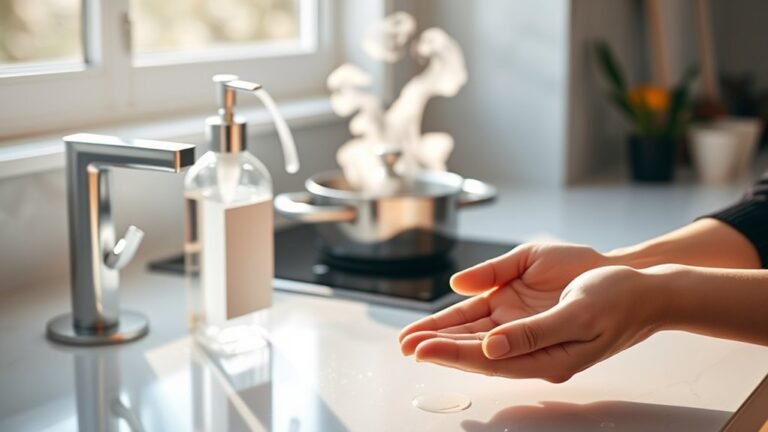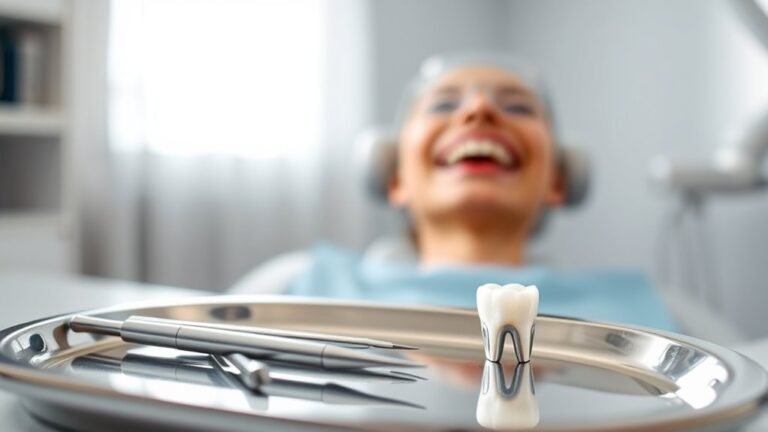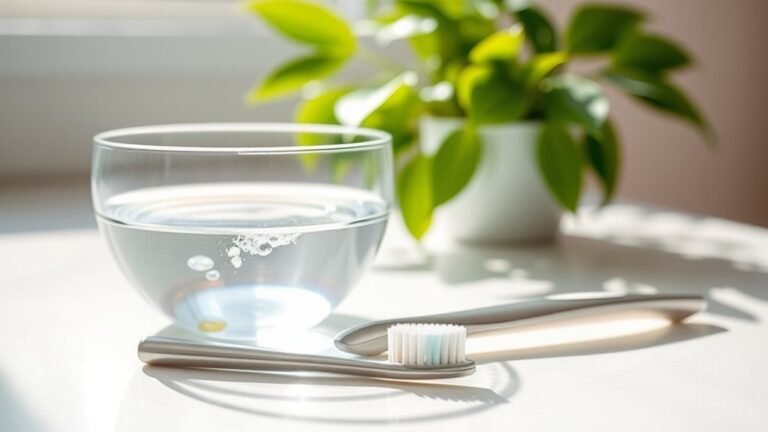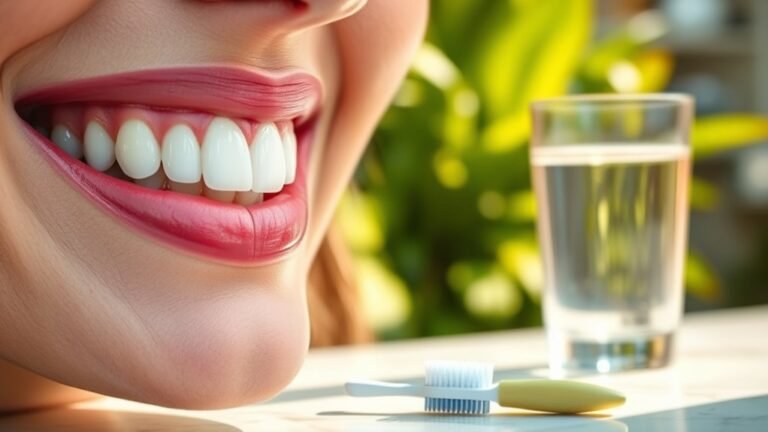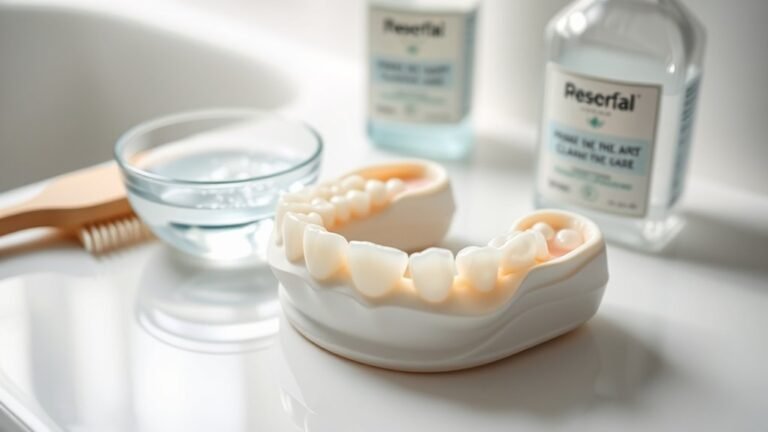How to Clean a Retainer After Strep
After a strep infection, cleaning your retainer is essential. Start by rinsing it under lukewarm water to remove debris. Use a soft-bristled toothbrush with mild dish soap to gently brush all surfaces. For deep cleaning, consider using vinegar or retainer cleaning tablets. Always wash your hands before handling the retainer, and avoid harsh chemicals. Regular cleaning helps prevent bacteria buildup and promotes oral health. Discover more about maintaining your retainer effectively.
Preparation For Cleaning
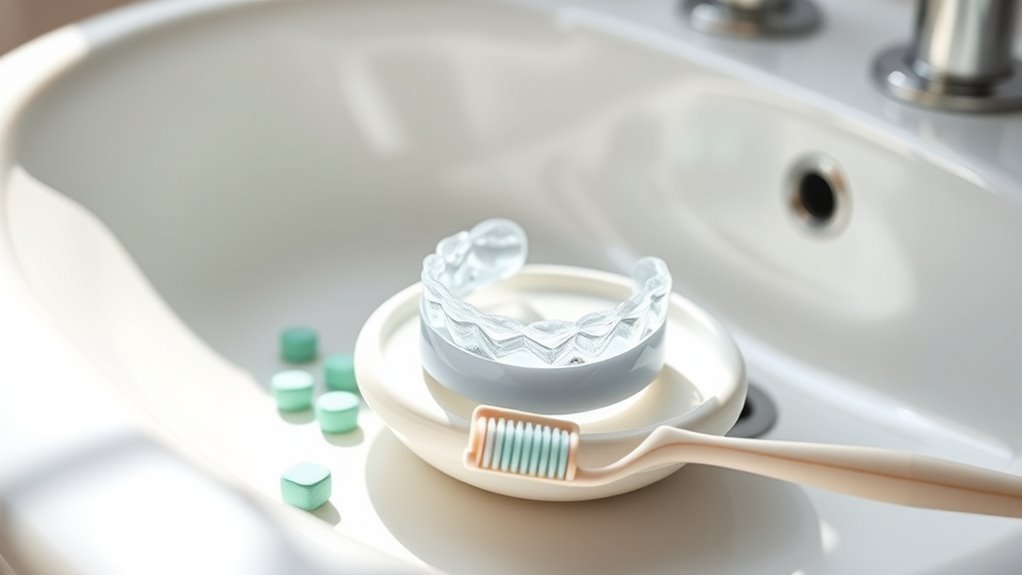
Before you begin cleaning your retainer, it’s important to gather all necessary supplies to guarantee an effective process. Proper retainer maintenance not only keeps your device clean but also helps in infection prevention. Start by ensuring you have a soft toothbrush dedicated to cleaning your retainer, mild soap or cleaner, and a clean towel for drying. If you’ve recently had strep or any other infection, you might consider using a disinfectant solution recommended by your orthodontist for extra precaution. Remember, a clean retainer contributes greatly to your oral health, reducing the risk of bacteria buildup. By preparing adequately, you’re taking the first step toward maintaining your retainer and protecting your smile.
Tools and Chemical Required
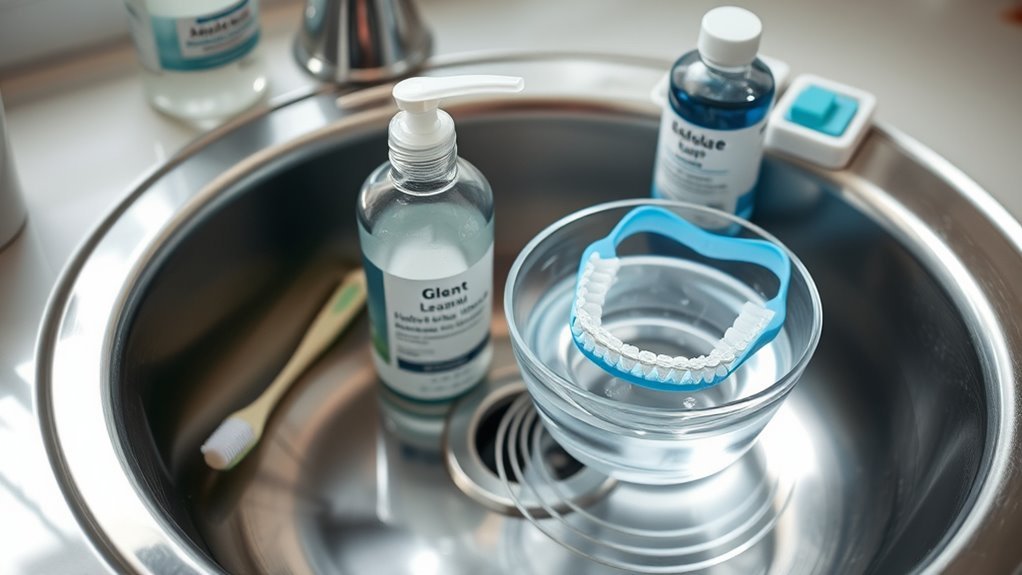
To effectively clean your retainer, it is essential to have the right tools and chemicals on hand. Here’s a list of vital items you’ll need to maintain proper cleaning frequency and guarantee your retainer remains germ-free after strep.
| Tool/Chemical | Purpose | Recommended Brand |
|---|---|---|
| Soft-bristle toothbrush | Gentle scrubbing | Oral-B |
| Mild dish soap | Basic cleaning solution | Dawn |
| Vinegar | Disinfectant | Any brand |
| Baking soda | Odor neutralizer | Arm & Hammer |
| Retainer cleaning tablets | Deep cleaning solution | Efferdent |
Using these cleaning solutions will help you maintain your retainer’s hygiene and prolong its lifespan. Be consistent with your cleaning routine—your oral health depends on it! For a gentle yet effective clean, consider using an all-purpose vinegar spray diluted with water as a natural disinfectant.
How to Clean:
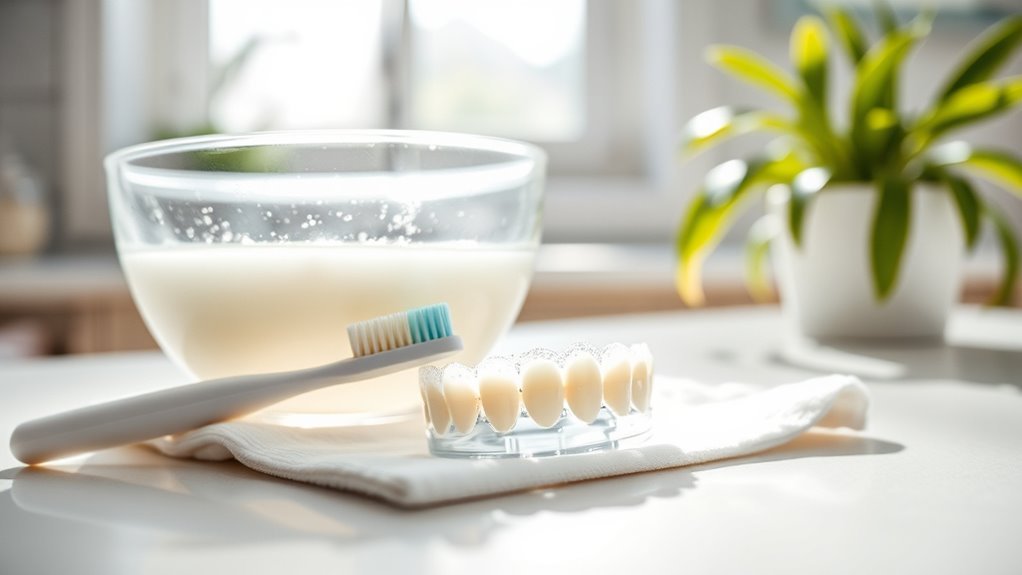
Step 1: Rinse
- Begin by holding your retainer under lukewarm water.
- Make sure the water is not too hot, as this could warp the retainer material.
- Gently swish the retainer in the water to dislodge any loose debris or particles.
Step 2: Brush
- Use a soft-bristled toothbrush specifically designated for cleaning your retainer.
- Apply a small amount of mild, non-abrasive toothpaste or a retainer cleaner on the toothbrush.
- Gently brush all surfaces of the retainer, including the inside, outside, and any crevices, to ensure thorough cleaning.
- Be cautious not to apply too much pressure to avoid damaging the retainer.
Step 3: Soak
- Prepare a soaking solution by mixing equal parts of water and white vinegar in a bowl or container.
- Submerge the retainer in the solution and let it soak for about 15-20 minutes.
- This soaking process helps to disinfect the retainer and remove any lingering bacteria.
Step 4: Rinse Again
- After soaking, remove the retainer from the solution and hold it under lukewarm water once more.
- This final rinse is crucial to eliminate any vinegar taste or residue from the retainer.
- Ensure the retainer is completely rinsed before placing it back in your mouth.
Safety Consideration
While cleaning your retainer is essential for maintaining oral hygiene, it’s crucial to take into account safety to avoid damaging the appliance or harming your health. When practicing hygiene, use gentle methods that won’t scratch or weaken the retainer material. Steer clear of harsh chemicals or abrasive tools, as they can lead to degradation and harmful residues. Be sure to wash your hands thoroughly before handling your retainer to minimize the risk of transferring bacteria, especially after a strep infection. Regular cleaning not only helps in infection prevention but also extends the life of your retainer. By integrating these safety considerations into your hygiene practices, you can confidently maintain your oral health without compromising safety.
Frequently Asked Questions
How Often Should I Clean My Retainer After Strep?
You should clean your retainer at least twice a day during your strep recovery. Imagine the horrors of bacteria lurking on your retainer—yikes! Proper retainer maintenance is essential to prevent infections. After strep, your immune system’s already working overtime, so don’t let your retainer add to the chaos. Regular cleaning guarantees you’re not inviting unwanted guests into your mouth. Stay consistent, and you’ll feel free to smile confidently again!
Can I Use Vinegar to Clean My Retainer?
Yes, you can use vinegar to clean your retainer. Vinegar’s natural acidity helps eliminate bacteria and odors, making it a beneficial option for retainer care. Just mix equal parts vinegar and water, soak your retainer for about 15-30 minutes, then rinse thoroughly with water to remove any residual vinegar taste. This method’s effective, cost-efficient, and safe for your retainer, allowing you to maintain ideal oral hygiene without harsh chemicals.
Is It Safe to Boil My Retainer for Cleaning?
Boiling your retainer? Well, unless you’re aiming for a warped masterpiece, it’s a hard pass. Most retainers are made from materials that can’t handle boiling methods; they’ll distort and lose their shape. Instead, stick to gentle cleaning solutions designed for retainers. Your smile deserves better than a science experiment gone wrong. Keep it safe, and your retainer will keep doing its job without turning into a melted mess!
What Should I Do if My Retainer Smells?
If your retainer smells, it’s important to address it promptly for proper retainer maintenance. Start by soaking it in a mixture of warm water and mild dish soap for about 15 minutes. For odor removal, consider using a denture cleaner or a solution of equal parts vinegar and water. After soaking, gently brush it with a soft toothbrush. Rinse thoroughly before wearing it again to guarantee freshness and hygiene.
Can I Use Toothpaste to Clean My Retainer?
You might’ve heard about Sarah, who used toothpaste to clean her retainer, thinking it’d do the trick. However, toothpaste can be abrasive and might scratch your retainer, affecting its fit and hygiene. Instead, consider using a gentle cleaner specifically designed for retainers. While toothpaste has some effectiveness in cleaning, it’s not the best choice for maintaining retainer hygiene. Stick to safer options to keep your retainer in top shape without risking damage.

